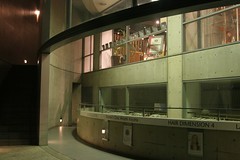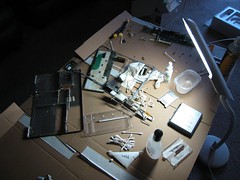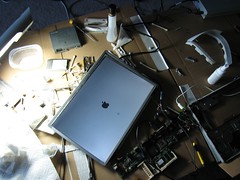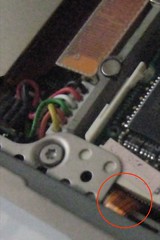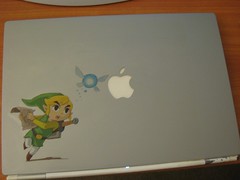A recent poll found that 43% of parents don't play video games with their kids who do, and the media is going crazy about these numbers. Not because 57% of parents DO play videogames with their kids, but because these 43% of parents don't know what their children are playing, don't know what they're being exposed to, and don't know what they might be learning from them, and this scares people. If you're a parent, you basically have two options:
- Option 1: Start playing videogames with your kid.
- Option 2: Take away your kid's videogame console.
Of these two choices, I feel that option 1 is the better of the two, and not just because the media loves stories about
violent acts that happen when videogames are taken away, but because I feel that option 2 ostracizes the child from their friends who probably play. When 81 percent of children age 4 to 17 play videogames at least occasionally, parents need to realize that videogames are a piece of childhood just like owning a pet, birthday parties and sleepovers. That's not to say that videogames should be "unlimited play" -- there will be times when your child will want to play, and it's up to the parent to say "no" or to place restrictions on the child. That is, quite simply, part of the job of being a parent.
Furthermore, I believe that option 1 has bonding possibilities, while option 2 just opens possibilities for conflict and confrontation. In my own childhood memories, I will always remember the day my father brought home an Atari 400 computer and a couple of landmark games: QIX and Pac-Man. My father and I turned QIX into a competition -- who could get the largest percentage covered before dying, and swapping turns with my father to try and get Pac-Man to the next board. I was bonding with my father over Pac-Man and QIX when I was just five years old -- these were games without any real story to them, today games are much more complex and detailed, resembling a movie or a soap opera.
My own childhood was filled with games of all type, not just videogames, but card games and board games too. While some games had very little purpose attached to them (as far as I can figure, all Pac-Man ever trained me to do was to learn how to move the rock hard joystick horizontally and vertically).
When we got our first PC, my father also had a floppy disk full of games. It had all the games you get as programming exercises these days, games like Towers of Hanoi (recursion) and Blackjack (moving things off stacks), although all I ever saw my father play those days was Blackjack and Chinese Chess.
My father had taught me how to play Blackjack as soon as I could do simple arithmetic, and we always had playing cards around the house (plus we used to get them every time our relatives would fly over to visit us -- in those days airlines would give you a deck of cards if you requested them -- I don't think they do that anymore. This computer version had things I didn't understand, like betting, doubling down and insurance -- I had no understanding of casinos then, but it was basically casino blackjack, and just like casino blackjack, you eventually lost all your money to the house. My father was okay at this game -- he could take the $100 that he started with, and sometimes make it up to $150 before he lost it all. Sometimes I could make it to $300 before losing it all, and my father would come by, look at my score, and say to me "When you 18, we go La Vayga and you win money for Daddy". "Okay," I said with as much enthusiasm as a 10 year old could muster up. I had no idea where Las Vegas was, or even what the relationship between being 18, having a high score and winning money was.
A year later, we went to Vegas with my grandfather and uncle. Being only 11, I couldn't play, and couldn't even really watch other people play, so instead, my father and I headed to Circus Circus (which supposedly had the best video arcade), and we played some head-to-head driving games for bit while my uncle and grandfather lost their money downstairs. I understood a little bit more after that trip, and it likely shaped my attitude towards the silliness of casinos -- they had lost collectively a total of $100 in the same amount of time that my father and I had spent less than $5 at the arcade, we we could have stayed there for 20 hours rather than just one, and if I really wanted to optimize my money-time, I could figure out which games I could last the longest on, and just play those.
My mother was the one who bought the NES for us. She spent just as much time playing Duck Hunt, Gyromite and Excitebike as the rest of us, and actually ended up being the most animated when something bad befell our characters. While my sisters and I might mutter a "darn" or just accept defeat, my mother would be screaming "Oh no!" when the scientist in Gyromite got squished or "run run run" when the motorcyclist fell off in Excitebike. Even my grandfather had a NES and played Tetris. While he could beat some of my younger cousins, Tetris was my specialty and having just won a local Tetris championship, I was eager to show off my skills. My grandfather was surprised at the speed at which I smacked him down, and said to my parents, "Mike's really good at this game." My father laughed and said "He plays that game all the time, and he's young, so he'll be faster. Soon the cousins will grow up and you won't be able to beat them anymore." My mother piped in with a "I don't even know how to play, so you know more about this game than I do. The kids are the experts."
It's memories like this that I remember from my childhood and my interactions with adults, and it was encouraging to know that as much as I didn't really understand their world, they were trying to learn about my interests and my world. I think games help break down that barrier a little, and I feel that overall, the experience of playing videogames is a positive rather than a negative.
I think it's only by understanding videogames and interacting with your child with them that the third and final option is unlocked: the ability to trust your child with making their own decisions .


